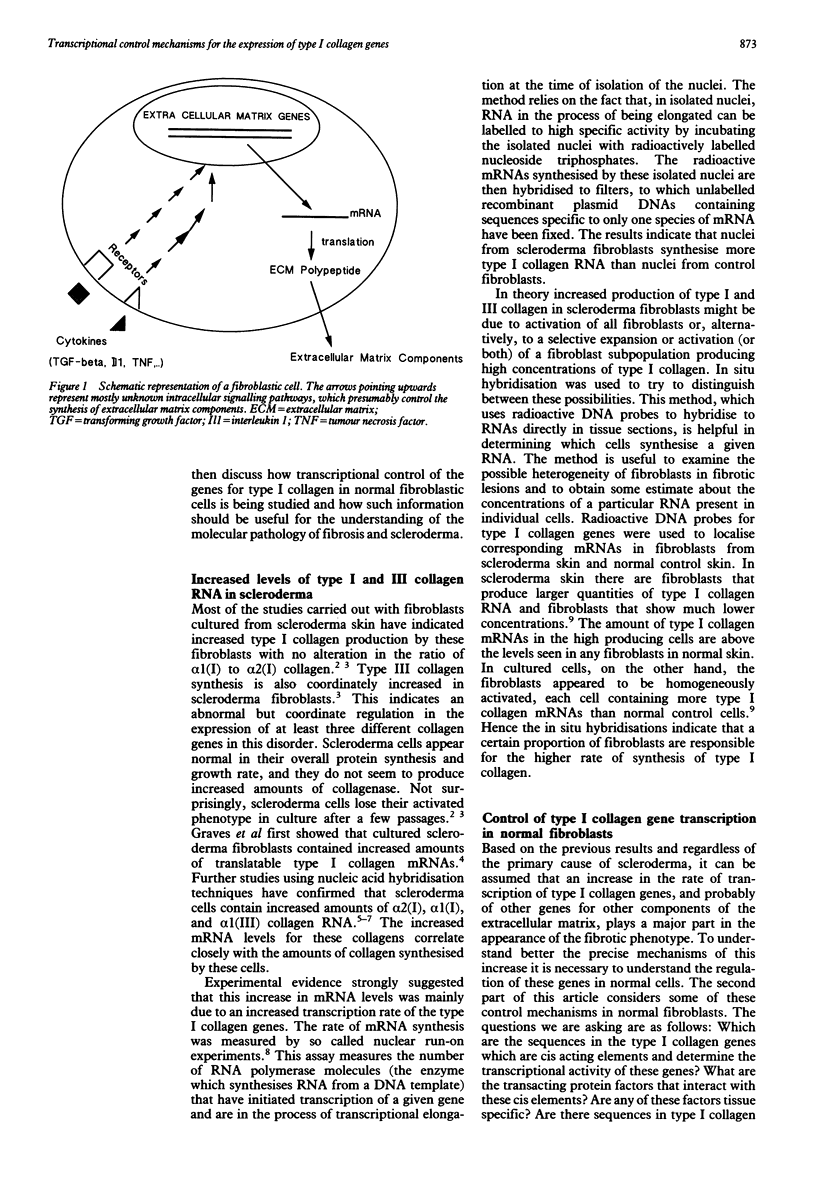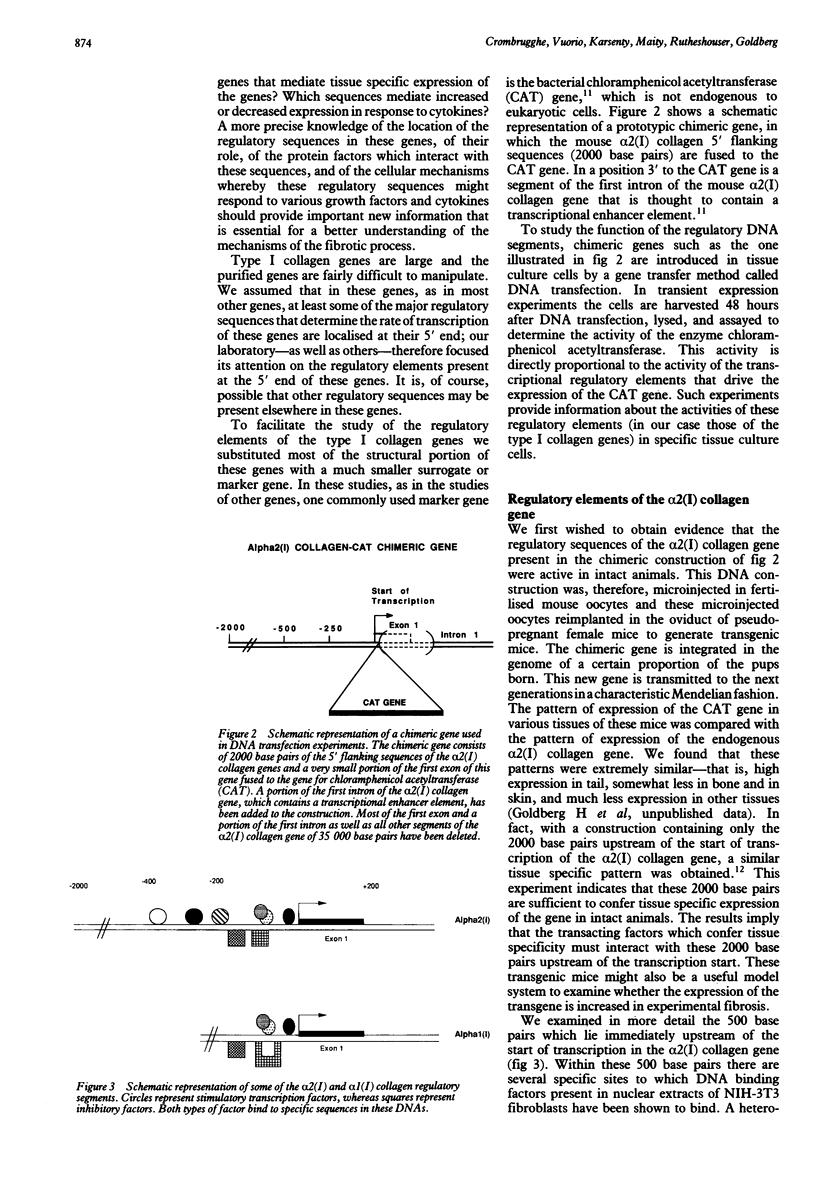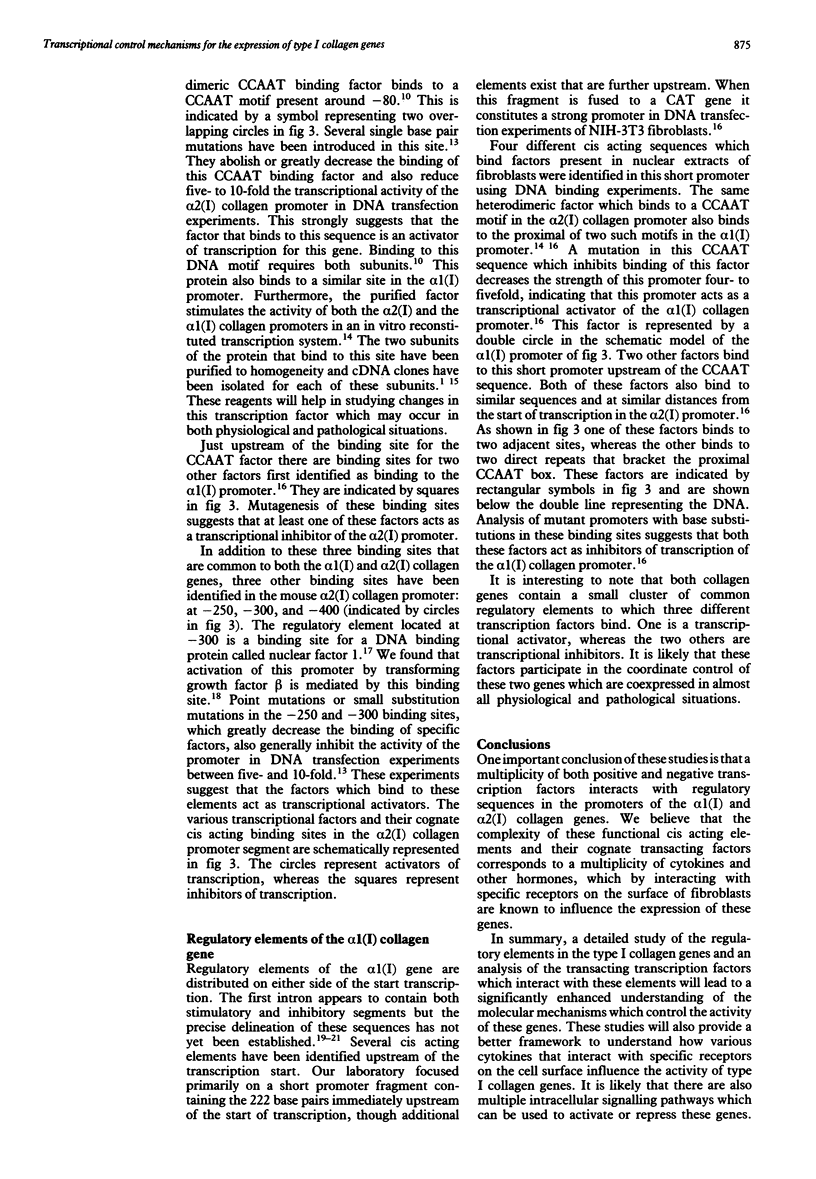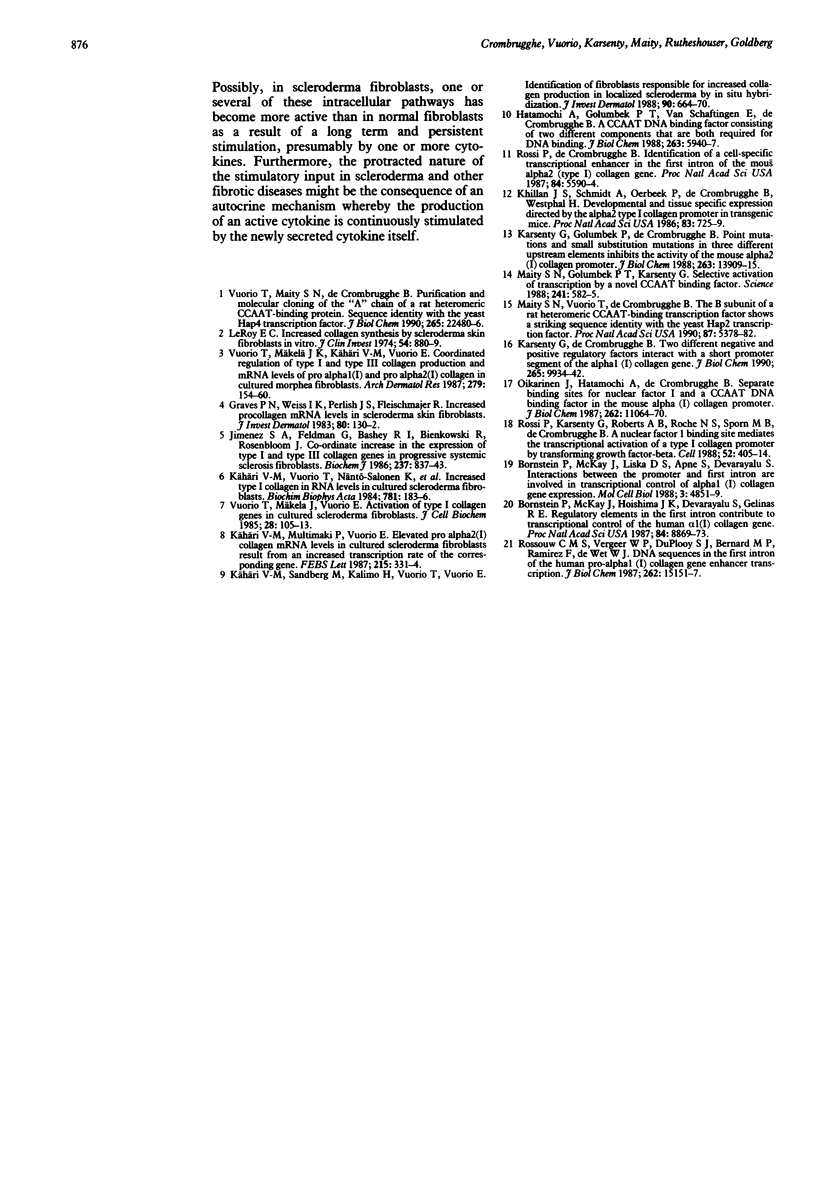Full text
PDF




Images in this article
Selected References
These references are in PubMed. This may not be the complete list of references from this article.
- Bornstein P., McKay J., Liska D. J., Apone S., Devarayalu S. Interactions between the promoter and first intron are involved in transcriptional control of alpha 1(I) collagen gene expression. Mol Cell Biol. 1988 Nov;8(11):4851–4857. doi: 10.1128/mcb.8.11.4851. [DOI] [PMC free article] [PubMed] [Google Scholar]
- Bornstein P., McKay J., Morishima J. K., Devarayalu S., Gelinas R. E. Regulatory elements in the first intron contribute to transcriptional control of the human alpha 1(I) collagen gene. Proc Natl Acad Sci U S A. 1987 Dec;84(24):8869–8873. doi: 10.1073/pnas.84.24.8869. [DOI] [PMC free article] [PubMed] [Google Scholar]
- Hatamochi A., Golumbek P. T., Van Schaftingen E., de Crombrugghe B. A CCAAT DNA binding factor consisting of two different components that are both required for DNA binding. J Biol Chem. 1988 Apr 25;263(12):5940–5947. [PubMed] [Google Scholar]
- Karsenty G., Golumbek P., de Crombrugghe B. Point mutations and small substitution mutations in three different upstream elements inhibit the activity of the mouse alpha 2(I) collagen promoter. J Biol Chem. 1988 Sep 25;263(27):13909–13915. [PubMed] [Google Scholar]
- Karsenty G., de Crombrugghe B. Two different negative and one positive regulatory factors interact with a short promoter segment of the alpha 1 (I) collagen gene. J Biol Chem. 1990 Jun 15;265(17):9934–9942. [PubMed] [Google Scholar]
- Khillan J. S., Schmidt A., Overbeek P. A., de Crombrugghe B., Westphal H. Developmental and tissue-specific expression directed by the alpha 2 type I collagen promoter in transgenic mice. Proc Natl Acad Sci U S A. 1986 Feb;83(3):725–729. doi: 10.1073/pnas.83.3.725. [DOI] [PMC free article] [PubMed] [Google Scholar]
- Kähäri V. M., Multimäki P., Vuorio E. Elevated pro alpha 2(I) collagen mRNA levels in cultured scleroderma fibroblasts result from an increased transcription rate of the corresponding gene. FEBS Lett. 1987 May 11;215(2):331–334. doi: 10.1016/0014-5793(87)80172-2. [DOI] [PubMed] [Google Scholar]
- Kähäri V. M., Sandberg M., Kalimo H., Vuorio T., Vuorio E. Identification of fibroblasts responsible for increased collagen production in localized scleroderma by in situ hybridization. J Invest Dermatol. 1988 May;90(5):664–670. doi: 10.1111/1523-1747.ep12560826. [DOI] [PubMed] [Google Scholar]
- Kähäri V. M., Vuorio T., Näntö-Salonen K., Vuorio E. Increased type I collagen mRNA levels in cultured scleroderma fibroblasts. Biochim Biophys Acta. 1984 Feb 24;781(1-2):183–186. doi: 10.1016/0167-4781(84)90136-2. [DOI] [PubMed] [Google Scholar]
- LeRoy E. C. Increased collagen synthesis by scleroderma skin fibroblasts in vitro: a possible defect in the regulation or activation of the scleroderma fibroblast. J Clin Invest. 1974 Oct;54(4):880–889. doi: 10.1172/JCI107827. [DOI] [PMC free article] [PubMed] [Google Scholar]
- Maity S. N., Golumbek P. T., Karsenty G., de Crombrugghe B. Selective activation of transcription by a novel CCAAT binding factor. Science. 1988 Jul 29;241(4865):582–585. doi: 10.1126/science.3399893. [DOI] [PubMed] [Google Scholar]
- Maity S. N., Vuorio T., de Crombrugghe B. The B subunit of a rat heteromeric CCAAT-binding transcription factor shows a striking sequence identity with the yeast Hap2 transcription factor. Proc Natl Acad Sci U S A. 1990 Jul;87(14):5378–5382. doi: 10.1073/pnas.87.14.5378. [DOI] [PMC free article] [PubMed] [Google Scholar]
- Oikarinen J., Hatamochi A., de Crombrugghe B. Separate binding sites for nuclear factor 1 and a CCAAT DNA binding factor in the mouse alpha 2(I) collagen promoter. J Biol Chem. 1987 Aug 15;262(23):11064–11070. [PubMed] [Google Scholar]
- Rossi P., Karsenty G., Roberts A. B., Roche N. S., Sporn M. B., de Crombrugghe B. A nuclear factor 1 binding site mediates the transcriptional activation of a type I collagen promoter by transforming growth factor-beta. Cell. 1988 Feb 12;52(3):405–414. doi: 10.1016/s0092-8674(88)80033-3. [DOI] [PubMed] [Google Scholar]
- Rossi P., de Crombrugghe B. Identification of a cell-specific transcriptional enhancer in the first intron of the mouse alpha 2 (type I) collagen gene. Proc Natl Acad Sci U S A. 1987 Aug;84(16):5590–5594. doi: 10.1073/pnas.84.16.5590. [DOI] [PMC free article] [PubMed] [Google Scholar]
- Rossouw C. M., Vergeer W. P., du Plooy S. J., Bernard M. P., Ramirez F., de Wet W. J. DNA sequences in the first intron of the human pro-alpha 1(I) collagen gene enhance transcription. J Biol Chem. 1987 Nov 5;262(31):15151–15157. [PubMed] [Google Scholar]
- Vuorio T., Maity S. N., de Crombrugghe B. Purification and molecular cloning of the "A" chain of a rat heteromeric CCAAT-binding protein. Sequence identity with the yeast HAP3 transcription factor. J Biol Chem. 1990 Dec 25;265(36):22480–22486. [PubMed] [Google Scholar]
- Vuorio T., Mäkelä J. K., Kähäri V. M., Vuorio E. Coordinated regulation of type I and type III collagen production and mRNA levels of pro alpha 1(I) and pro alpha 2(I) collagen in cultured morphea fibroblasts. Arch Dermatol Res. 1987;279(3):154–160. doi: 10.1007/BF00413250. [DOI] [PubMed] [Google Scholar]
- Vuorio T., Mäkelä J. K., Vuorio E. Activation of type I collagen genes in cultured scleroderma fibroblasts. J Cell Biochem. 1985;28(2):105–113. doi: 10.1002/jcb.240280204. [DOI] [PubMed] [Google Scholar]



